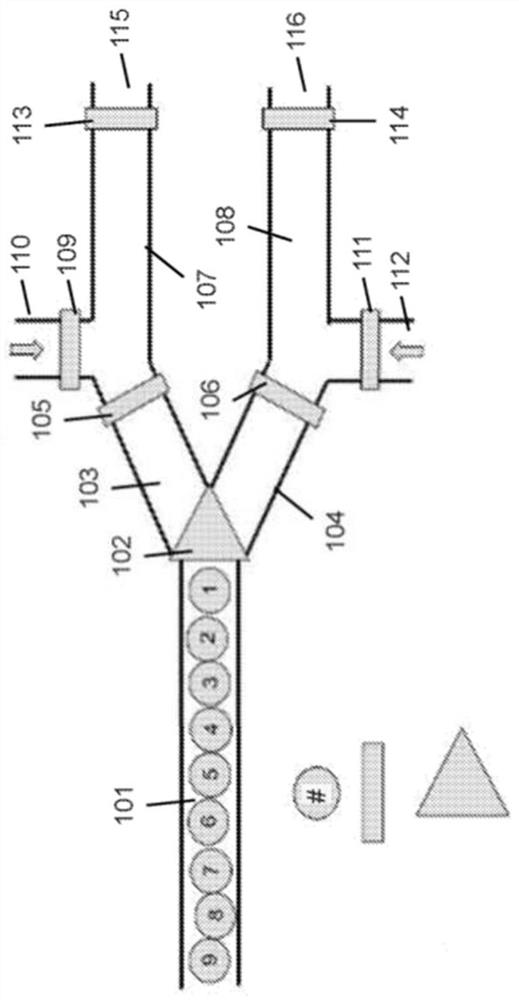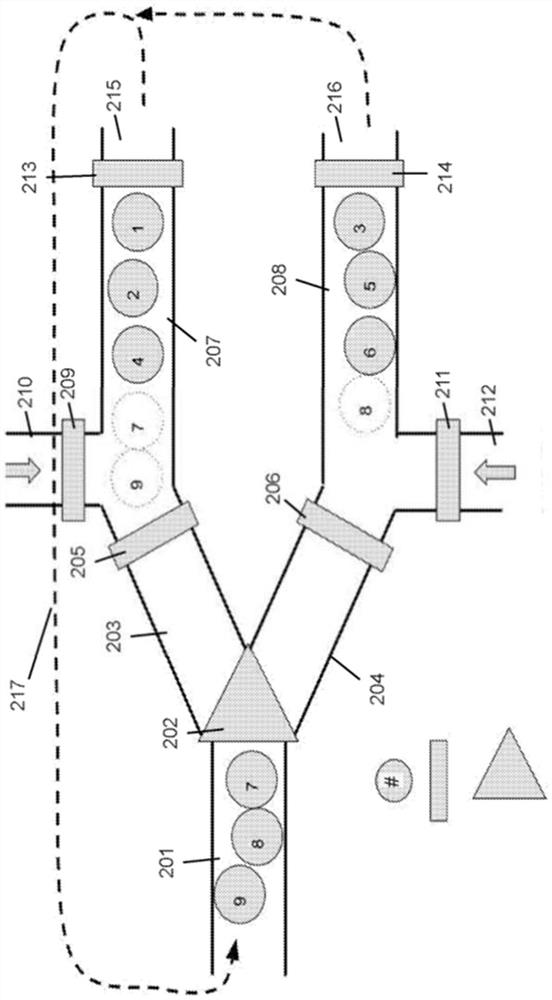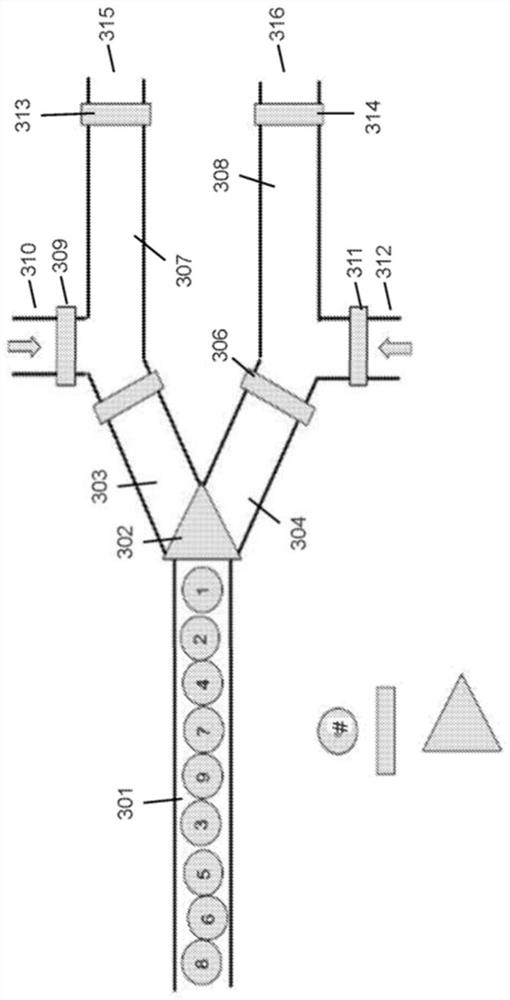Methods of using microfluidic positional encoding devices
A microfluidic, device technology that uses microfluidic position-encoded devices to address issues that slow down the development of new diagnostic and therapeutic methods
- Summary
- Abstract
- Description
- Claims
- Application Information
AI Technical Summary
Problems solved by technology
Method used
Image
Examples
preparation example Construction
[0412] In various embodiments, peptide synthesis is performed in or on a unit of the microfluidic device described herein. In some cases, peptide synthesis is accomplished using solid-phase peptide synthesis. Peptide synthesis methods used in accordance with various embodiments may include microwave-assisted peptide synthesis and methods of peptide synthesis utilizing photolabile linkers and UV radiation (see, eg, Qvortrup et al., Organic Letters 2014, 16:4782-85. Either or A plurality of reagents for peptide synthesis can be delivered to the units described herein in the microfluidic devices described herein. The reagents for peptide synthesis can comprise one or more of the following: Carbodiimides such as dicyclohexyl Carbodiimide (DCC), Diisopropylcarbodiimide (DIC); Triazoles such as 1-hydroxybenzotriazole (HOBt), 1-hydroxy-7-aza-benzotriazole (HOAt) ); ethyl cyanohydroxyiminoacetate (oxyma); hexafluorophosphate azabenzotriazole tetramethyl uranium (HATU); hexafluorophos...
Embodiment 1
[0524] Position coding device architecture
[0525] We constructed a system configured to perform the loading, holding, and manipulation of cells as an example of position encoding in a microfluidic device. The system includes a fluid network and a flow control system that controls the flow of fluid through the network, such as Figure 14 shown. The fluidic network consisted of fused silica capillaries (363um OD, 50um ID, Molex), capillary connectors (CapTight connectors, LabSmith) and custom connectors.
[0526] The bead-containing portion of the network begins with a feed channel 1405, which acts as both a loading channel and a reservoir for beads prior to rearrangement of the beads. This channel is connected to the main channel 1410 by a custom T-connector 1406, which acts as a bead spacer. The two branch channels 1412, 1420 are connected to the main channel by additional T-connectors configured to act as bead spacers. The beads can be distributed and retained in these ...
Embodiment 2
[0531] Position Encoding Device - Bead Spacer
[0532] We first manually loaded a set of highly monodisperse 40 μm beads into the feeder channel 1405, covered the channel input with a bead stopper 1404, and then connected the other end of the bead stopper to the channel’s fluidic control line 1403. In the main channel towards the top side of the main channels 1410 , 1418 , 1426 and through the container 1416 and the main channel container 1417 pressure is applied to the feed channel.
[0533] The beads are fed through the feeder channel in a stacked fashion. When adjoining beads reach the T-connector, the lateral flow creates separation between the beads as they enter the main channel 1410.
[0534] Snapshot images of films of beads separated using T-connectors such as Figure 23 shown. We developed a bead spacer to address the challenges of manipulating beads in a stacked state (i.e., the risk of clogging and loss of positional encoding when channel dimensions change, and ...
PUM
| Property | Measurement | Unit |
|---|---|---|
| diameter | aaaaa | aaaaa |
| diameter | aaaaa | aaaaa |
| diameter | aaaaa | aaaaa |
Abstract
Description
Claims
Application Information
 Login to View More
Login to View More - R&D
- Intellectual Property
- Life Sciences
- Materials
- Tech Scout
- Unparalleled Data Quality
- Higher Quality Content
- 60% Fewer Hallucinations
Browse by: Latest US Patents, China's latest patents, Technical Efficacy Thesaurus, Application Domain, Technology Topic, Popular Technical Reports.
© 2025 PatSnap. All rights reserved.Legal|Privacy policy|Modern Slavery Act Transparency Statement|Sitemap|About US| Contact US: help@patsnap.com



